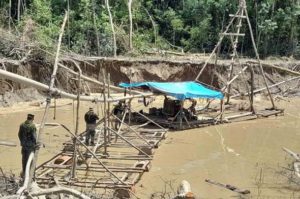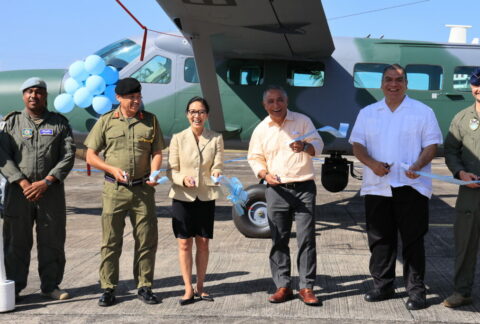A cooperation agreement among the Peruvian government, the National Aeronautics and Space Administration (NASA), and the United States Agency for International Development (USAID), now makes it possible to monitor illegal mining and deforestation in the Peruvian Amazon. The Radar Mining Monitoring Tool (RAMI), was officially launched on June 16, 2021, the Peruvian Ministry of the Environment (MINAM, in Spanish) said in a statement.
The agreement is part of the SERVIR-Amazonia program, a joint development initiative between NASA and USAID that promotes resilience and environmental policies around the world. SERVIR works with local authorities to solve problems with the use of satellite imagery, geospatial data, and analysis tools that are available to the public.

Through this initiative, a team of Peruvian researchers from the Association for the Conservation of the Amazon Basin (ACCA, in Spanish), the Peruvian government, and NASA have developed RAMI, a satellite tool to identify gold mining hotspots and examine their proximity to protected areas, indigenous territories, and degraded areas in the Amazon rainforest, NASA said in a statement.
The platform uses satellite images, planetary data, and analytical tools. RAMI has the ability to penetrate clouds, even during rainfall, generating real-time information throughout the year, MINAM said in a statement.
The NASA Earth Observatory explained that RAMI provides updated mining alerts every 15 days. In addition, the institute noted that the new monitoring platform is on the internet, open to the public.
“This is a great contribution to improve access to information, environmental justice, and timely action to eradicate deforestation caused by gold mining in the Amazon,” Mariano Castro, MINAM’s vice minister of Environmental Management, said during RAMI’s launch. “Our main goal is to empower authorities and give them enough resources to prioritize and focus their efforts,” said Sidney Novoa, SERVIR-Amazonia project manager and ACCA researcher.
Devastating effects
In the last 30 years, small-scale gold mining has spurred the loss of more than 100,000 hectares of forest in the Peruvian Amazon, according to the NASA Earth Observatory website. “While government agencies and conservation groups have successfully curbed such activity in recent years, new mining hotspots still pop up in unauthorized zones,” the institute says.
The impact of illegal gold exploitation “harms people’s health and the economy, and it threatens security by producing mafias and killings,” the Peruvian Army Center for Strategic Studies says on the internet. “In addition, it turns thousands of children, adolescents, and women into victims of labor exploitation, sexual exploitation, and human trafficking.”
“This is a clear example of SERVIR in action, combining state-of-the-art methods with real needs on the ground,” África Flores, science coordination lead for NASA SERVIR-Amazonia, said in a NASA statement. “This is a step toward protecting the Peruvian Amazon’s climate, clean water, and rich ecological heritage,” Sandra Cauffman, deputy director of NASA’s Earth Science Division, said in the report.









